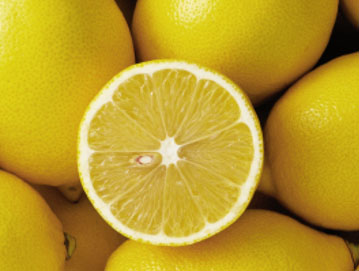Did you know that about 25% of adults in America suffer from diabetes, if you are over 45 and overweight the chances that you have it are 1 in 2.
U.S. Department of Health and Human Services estimates that 1 in 4 U.S. adults aged 20 years or older, 57 million people, had pre-diabetes in 2007.
Insulin resistance is reversible, you get it by eating the wrong foods, yet you can cure it by eating the right ones.
If your blood sugar levels are up and down on a regular basis, eventually your body will sustain some damage in the inside and your risk of developing heart disease, cancer and memory loss will increase dramatically. This path of self-destruction can be reversed. Nothing happens overnight and you can halt these bad eating habits and substitute them with healthy ones.
Fast Acting Foods
You get up in the morning and you feel sluggish, you need a quick boost of energy, so you reach for a toast or bagel, some jelly, candy bar, coffee with two sugars and out you go. These foods dissolve quickly in your stomach and reach the blood stream, flooding your body with blood sugar, glucose. But this surge of energy doesn't last long, pretty soon you feel worse off than before. Your energy level sinks, so what's for lunch, what about a sandwich on a bun, a soft drink and a couple of cookies and you are ready for another ride in the roller coaster. What goes up must come down. By 2pm you feel so tired that you reach for a snack, maybe a candy bar. Sad but true.
Blood Sugar Matters
If you eat a health oriented diet of whole foods and exercise on a regular basis, but lets say once in a while indulge in a big meal and your blood sugar skyrockets, your body will bring it down in a couple of hours, only those with untreated diabetes have high blood sugar levels most of the time. But remember that even if you are healthy, if your blood sugar levels after meals are high on a regular basis, this situation can be damaging to your body over time even if you never develop diabetes.
When you eat a big meal, specially one with starchy and/or sugary foods, the food is converted into glucose and gives you a boost of energy. But more often than not you get much more glucose than you need, therefore rising the blood sugar levels twice as much as a healthy meal would. The body can bring the blood sugar down by releasing insulin, an hormone produced by beta cells in the pancreas. Insulin signals the body to let the blood sugar into cells that would use it as fuel and to store the rest.
If you eat a load of french fries or a big sub, your body has to deal with a serious flood of blood sugar, so it overreacts pumping to much insulin, all that extra insulin brings the blood sugar down too far. Now your blood sugar stays low, you feel dragging, you have no energy, may be even a headache.
Your body recognizes that your blood sugar is too low and releases hormones to elevate the blood sugar levels and your brain tells you that you are hungry, even that your lunch was very rich on calories, consequently you reach for may be a doughnut, sounds familiar?
Well the chain of problems continues, that excess of blood sugar also stops burning fat for fuel so the body can use up the blood sugar. Here comes obesity.
A diet like that contributes to weight gain, also clogs your arteries and elevates your blood pressure and raises the level of inflammation in the body as well.
High blood sugar produces unstable forms of oxygen called free radicals. These molecules damage the arteries, blood has more difficulty flowing and cholesterol sticks to their walls. As you probably know, if you eat
healthy meals you are helping your heart function.
On The Road To Diabetes?
Type 2 Diabetes is the one people develop in their forties and it is related to lifestyle. In this type of diabetes the body can't make enough insulin to keep the blood sugar levels under control. Eating fast-acting meals increases your chances of developing type 2 diabetes by 40% in middle age men and by 50% in middle age women.
The good news is that diabetes takes years to develop and you can halt its progress at any time. Of course the sooner you get off that path of self-destruction the easier it will be to change directions.
Insulin Resistance
The more foods that you eat that raise your blood sugar the more insulin that your body has to pump out to handle the load. eventually the body needs more insulin to do the job.
Insulin helps transport glucose into tissues so it can be broken down and used for energy. This mechanism helps maintain the normal levels of glucose in the blood.
When insulin resistance is present, the tissues start to resist the effects of insulin, the normal response to a given amount of insulin is reduced, thus the pancreas has to produce more insulin to maintain the normal blood sugar levels. Over time the pancreas becomes unable to sustain the increased insulin production. This results in high blood sugar levels and the onset of type 2 Diabetes.
http://www.labtestsonline.org/understanding/conditions/insulin_resistance-2.html
http://www.medicinenet.com/insulin_resistance/article.htm





